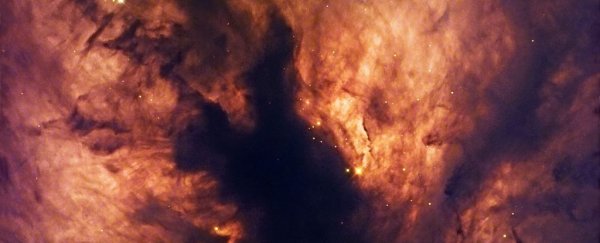From the smallest bacterium to the greatest galaxy, death looms on the horizon; even if, in cosmic terms, the time scales are too large for us to truly comprehend. Eventually, even the Universe itself should come to an end – when the last light winks out, and the cold, dense lumps of dead stars are all that remain.
That is, at least, how it is under current cosmological models. What if our Universe doesn't die a cold death, but collapses, reinflates, and collapses again, over and over, like a giant cosmic lung?
It's not exactly a widely accepted theory, but for some cosmologists, our Universe could be just one in a long series of births, deaths and rebirths that is without beginning or end – not a Big Bang, but a Big Bounce.
Now physicists have shown that the latest iteration of the Big Bounce hypothesis – which had solved significant problems with previous iterations – still has pretty major limitations.
"People proposed bouncing universes to make the Universe infinite into the past, but what we show is that one of the newest types of these models doesn't work," said physicist Will Kinney of the University at Buffalo.
"In this new type of model, which addresses problems with entropy, even if the Universe has cycles, it still has to have a beginning."
Currently, the most accepted model of our Universe sees it emerge from a point of origin called a singularity. Around 13.8 billion years ago the Universe as we know it began to expand out of an impossibly dense bit of time and space … for some reason.
Unfortunately the models supporting a 'Big Bang' explanation have little to say much about what such a singularity might look like.
The Big Bounce hypothesis, as an alternative, could sidestep the issue of a singularity by doing away with it entirely. A collapsing universe would instead rebound before it ever reached such a model-breaking moment.
The hypothesis hasn't been without its own issues, however. An endlessly "bouncing" Universe should also have endlessly growing entropy, the measure of disorder in the Universe. If the Big Bang was just one of an eternal series of bangs, the entropy should therefore have been really high; yet it wasn't. In fact, if the Universe was high in entropy at the Big Bang, it couldn't exist as we know it.
In 2019, the Big Bounce got a reprieve, with the publication of a revised model that contained a solution to this significant hurdle that had stymied the hypothesis for decades. Researchers found that the expansion of the Universe with each cycle dilutes entropy sufficiently to return the Universe to its original state before the next bounce.
This was a huge deal, seemingly putting the Big Bounce back on the table as a plausible cosmological model; but now, other scientists have done what scientists do best. They have poked a new hole in the revised model.
Kinney and his colleague, physicist Nina Stein, also of the University at Buffalo, conducted a series of calculations, and found that a cyclic Universe can't stretch endlessly back into the past.
"Long story short, we showed that in solving the entropy problem, you create a situation where the Universe had to have a beginning," Kinney explained. "Our proof shows in general that any cyclic model which removes entropy by expansion must have a beginning."
That doesn't mean that the cyclic Universe is dead in the water. The team notes that their work does not apply to physicist Roger Penrose's model of the cyclic Universe, called conformal cyclic cosmology. According to his version of a repeating universe, each cycle expands infinitely with no period of contraction. That is pretty complex stuff, and is going to require further poking.
For now, however, it seems that the Big Bounce is, at the very least, going to require a bit more thought to remain viable.
"The idea that there was a point in time before which there was nothing, no time, bothers us, and we want to know what there was before that – scientists included," Stein said. "But as far as we can tell, in models that address entropy, there must have been a 'beginning'. There is a point for which there is no answer to the question, 'What came before that?'"
The research has been published in the Journal of Cosmology and Astroparticle Physics.
